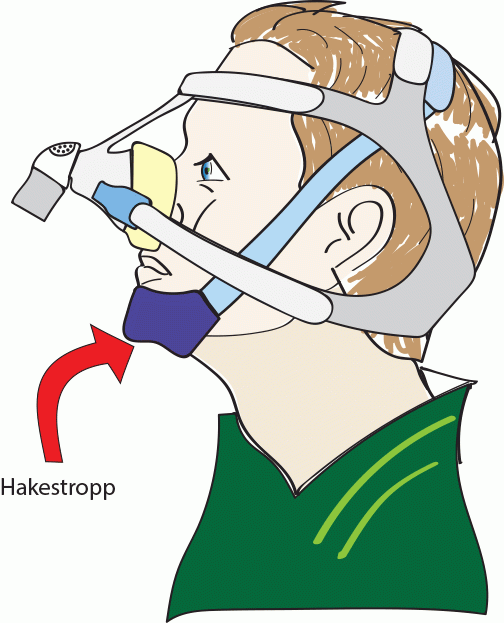Various complications can arise in connection with the therapy, but they can be prevented with these tips.
Preventing leakage around the mask
Pressure sores on the bridge, cheeks or forehead are one of the most common complications. This happens when the straps are tightened too much to prevent leakage from the mask. Ensure the following:
- That the mask and straps are the right size and comfortably tight.
- For masks with a two-layer cushion: ensure that the outer layer is not crimpled by lifting the mask of the face, so enough air gets between the two layers after the machine has started.
- Newly washed mask! (See cleaning).
- Wash the mask before putting it on the face.
- Avoid using skin creams.
- Moustaches/beards often lead to leaks!
- It is very rare for a mask to maintain a full seal throughout the night. Some slight leakage often occurs when turning in bed. This does not generally cause a problem.
- Nonetheless, avoid leakage to the eyes, as it will irritate the eyes making them red and sore.
- Avoid tightening the straps each time the mask has some slight leakage - try moving it slightly on your face.
Preventing pressure sores
A comfortable mask is essential.
- It must not pinch or press the nostrils together.
- Try to tighten the straps as little as possible.
- The straps must not rub the skin.
- The ears must be free of pinching and rubbing.
- Always replace the mask with sores start developing! Contact the health personnel who fitted the mask.
- Try nasal pads/Comfeel if sores start developing on the bridge of the nose.
- Hapla felt (thin felt with adhesive on the back) can be cut to size and affixed to the mask if the skin reacts to the materials of the mask. Other types of soft fabric can also be used to protect the skin.
- Have two different masks. These can help relieve pressure. Users who use masks almost around the clock should have several different masks to vary the pressure points on the skin.
- Good skin care is essential when taking off the mask – skin creams during the day, as needed (if not using a mask).
Blocked or runny nose?
Some people experience a blocked or runny nose through using a mask.
- Nasal sprays can be used for a short period of time with a cold. Normal saline (NaCl 0.9%) can also be used to flush the nose if one is prone to having a blocked nose.
- Masks that cover the mouth and nose are the best option for chronic nasal problems.
- A humidifier connected to a BiPAP/ventilator heats and gives moisture to the therapy air. This will often remedy problems with a blocked or runny nose.
Leakage around the mouth?
- A chinstrap can help if there is a problem with the mouth slipping open when asleep. There are different types of chinstraps. The strap is placed under the chin and is suitably tightened and attached to the top of the head. This prevents the mouth from opening with a fully relaxed jaw, but it must still be possible to open the mouth when using one’s muscles.
